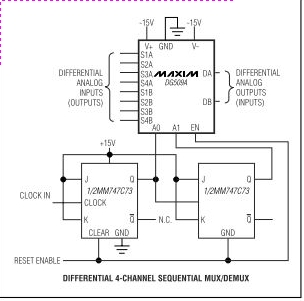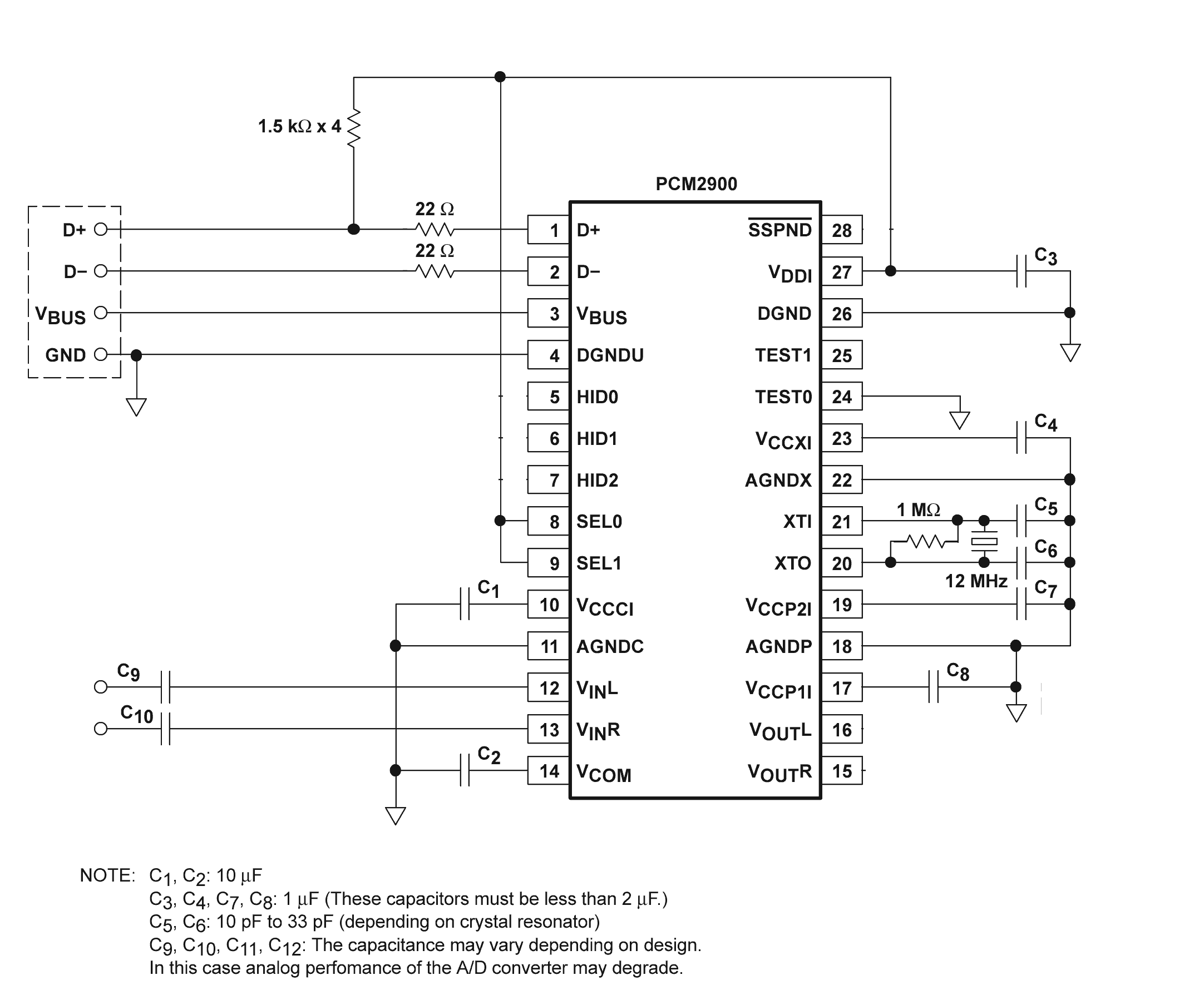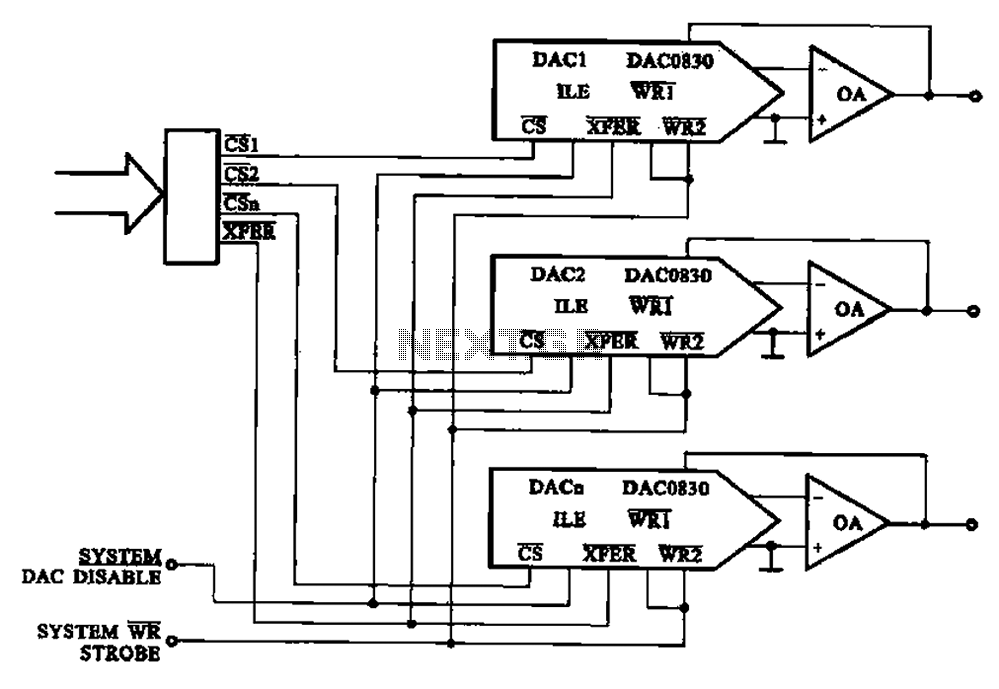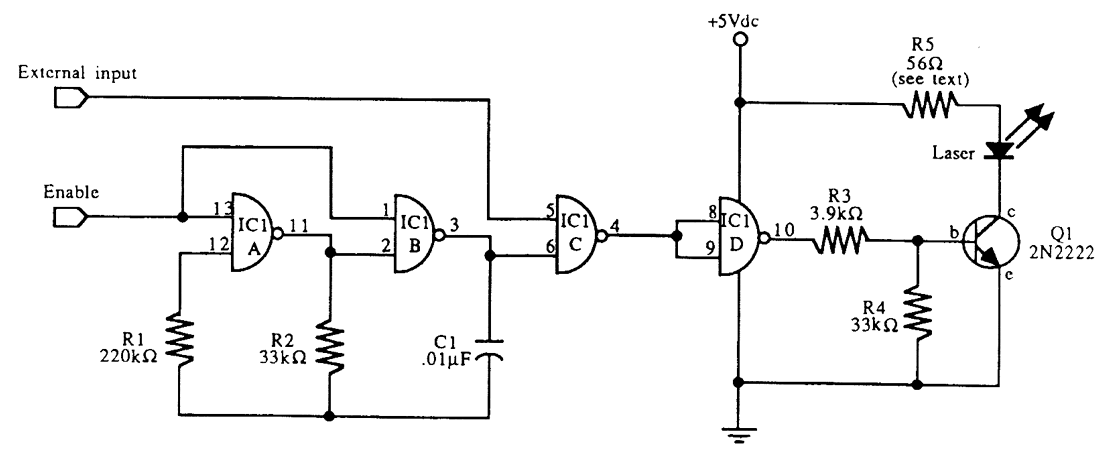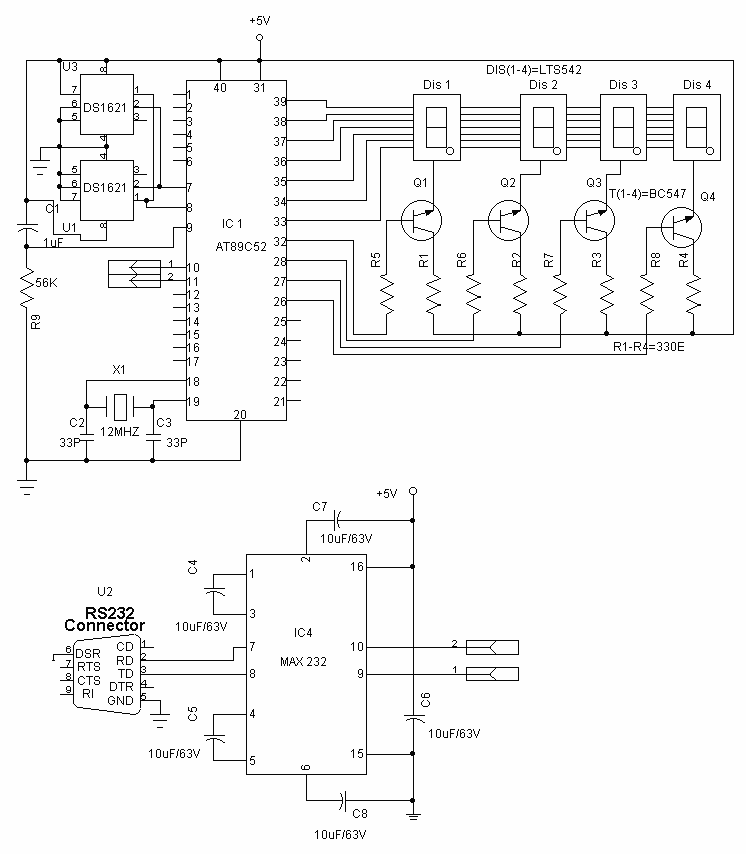
Analog Filters for Data Conversion
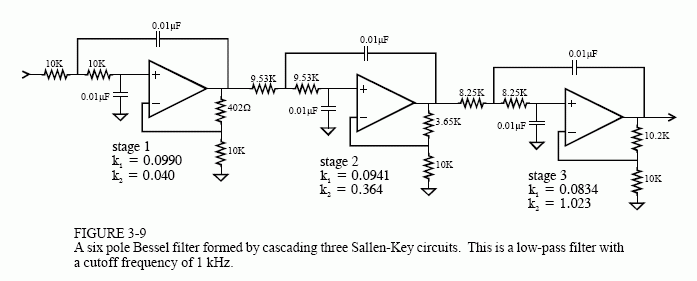
The input signal is processed with an electronic low-pass filter to eliminate all frequencies above the Nyquist frequency, which is half of the sampling rate. This process is essential to prevent aliasing during sampling and is referred to as an antialias filter. Subsequently, the digitized signal is sent through a digital-to-analog converter followed by another low-pass filter set to the Nyquist frequency. This output filter is known as a reconstruction filter and may include a frequency boost. However, a significant issue with this straightforward model is that the limitations of electronic filters can be as detrimental as the problems they aim to mitigate. For those primarily focused on software, it may seem unnecessary to engage with this section; however, understanding the properties of analog filters is crucial for successful digital signal processing (DSP). The characteristics of every digitized signal depend on the type of antialias filter used during acquisition. Without knowledge of the antialias filter's nature, one cannot comprehend the characteristics of the digital signal. Moreover, the future of DSP involves replacing hardware with software. For instance, multirate techniques introduced later can lessen the reliance on antialias and reconstruction filters through advanced software methods. A solid understanding of hardware is essential for designing software that effectively replaces it. Additionally, much of DSP revolves around digital filter design, often beginning with an equivalent analog filter that is then converted into software. Subsequent chapters will assume a foundational knowledge of analog filter techniques. Three primary types of analog filters are commonly used: Chebyshev, Butterworth, and Bessel (also known as the Thompson filter), each optimized for different performance parameters. The complexity of each filter can be adjusted by selecting the number of poles; a mathematical term that will be elaborated on in future chapters. The more poles a filter has, the more electronic components it requires, resulting in improved performance. The names of these filters describe their functions rather than a specific arrangement of resistors and capacitors. For example, a six-pole Bessel filter can be realized through various circuit configurations, all maintaining the same overall characteristics. For DSP applications, the properties of these filters are more critical than their construction. Nevertheless, a brief overview of the electronic design of these filters will be provided to establish a foundational framework. A common building block for analog filter design is the modified Sallen-Key circuit, named after the authors of a 1950s paper describing the technique. The circuit illustrated is a two-pole low-pass filter that can be configured to represent any of the three fundamental types. A table provides the necessary parameters to select appropriate resistors and capacitors. For instance, to design a 1 kHz, two-pole Butterworth filter, specific parameters are provided, allowing the calculation of component values. Precision components are recommended, and the choice of operational amplifier is flexible as long as its unity gain frequency exceeds 30 to 100 times the filter's cutoff frequency. A Bessel filter can be created by cascading three stages, each utilizing different values for k1 and k2, leading to varying resistor and capacitor values. To create a high-pass filter, simply swap the resistor and capacitor components in the circuit while maintaining the feedback resistor.
The process of filtering signals in electronic systems is critical for ensuring the integrity of the data being processed, particularly in applications involving analog-to-digital conversion and subsequent digital signal processing. An antialiasing filter is implemented prior to sampling to eliminate high-frequency components that could cause distortion in the digitized signal. This is particularly important in systems where accurate representation of the original signal is required. The design of the antialiasing filter must consider the sampling rate, as the Nyquist theorem dictates that the maximum frequency that can be accurately sampled is half of the sampling rate.
The reconstruction filter plays a complementary role after the digital-to-analog conversion, smoothing out the output signal to restore the original analog waveform. The design of this filter can significantly affect the quality of the reconstructed signal, particularly in applications such as audio processing, where fidelity is paramount.
The selection of filter types—Chebyshev, Butterworth, and Bessel—affects the phase and amplitude response of the system. Chebyshev filters offer a steeper roll-off and ripple in the passband, making them suitable for applications requiring sharp cut-offs. Butterworth filters provide a maximally flat frequency response in the passband, ideal for applications where a smooth response is necessary. Bessel filters, with their maximally flat group delay, are particularly useful in applications where phase linearity is critical, such as in audio and video systems.
The modified Sallen-Key topology is a versatile and widely-used circuit configuration for implementing these filters due to its simplicity and effectiveness. The ability to adjust the filter characteristics by varying the number of poles allows for tailored performance to meet specific application requirements. The precise selection of resistor and capacitor values is essential for achieving the desired cutoff frequency and filter behavior, with a recommendation for using components of 1% tolerance or better to minimize variability in performance.
In conclusion, a comprehensive understanding of both the theoretical and practical aspects of analog filters is essential for effective digital signal processing and the design of robust electronic systems. This knowledge lays the groundwork for more advanced topics in digital filter design and the implementation of software-based solutions that may replace traditional hardware filtering techniques.the input signal is processed with an electronic low-pass filter to remove all frequencies above the Nyquist frequency (one-half the sampling rate). This is done to prevent aliasing during sampling, and is correspondingly called an antialias filter. On the other end, the digitized signal is passed through a digital-to-analog converter and another low-pass filter set to the Nyquist frequency. This output filter is called a reconstruction filter, and may include the previously described frequency boost. Unfortunately, there is a serious problem with this simple model: the limitations of electronic filters can be as bad as the problems they are trying to prevent.
If your main interest is in software, you are probably thinking that you don`t need to read this section. Wrong! Even if you have vowed never to touch an oscilloscope, an understanding of the properties of analog filters is important for successful DSP.
First, the characteristics of every digitized signal you encounter will depend on what type of antialias filter was used when it was acquired. If you don`t understand the nature of the antialias filter, you cannot understand the nature of the digital signal.
Second, the future of DSP is to replace hardware with software. For example, the multirate techniques presented later in this chapter reduce the need for antialias and reconstruction filters by fancy software tricks. If you don`t understand the hardware, you cannot design software to replace it. Third, much of DSP is related to digital filter design. A common strategy is to start with an equivalent analog filter, and convert it into software. Later chapters assume you have a basic knowledge of analog filter techniques. Three types of analog filters are commonly used: Chebyshev, Butterworth, and Bessel (also called a Thompson filter).
Each of these is designed to optimize a different performance parameter. The complexity of each filter can be adjusted by selecting the number of poles, a mathematical term that will be discussed in later chapters. The more poles in a filter, the more electronics it requires, and the better it performs. Each of these names describe what the filter does, not a particular arrangement of resistors and capacitors.
For example, a six pole Bessel filter can be implemented by many different types of circuits, all of which have the same overall characteristics. For DSP purposes, the characteristics of these filters are more important than how they are constructed.
Nevertheless, we will start with a short segment on the electronic design of these filters to provide an overall framework. Figure 3-8 shows a common building block for analog filter design, the modified Sallen-Key circuit. This is named after the authors of a 1950s paper describing the technique. The circuit shown is a two pole low-pass filter that can be configured as any of the three basic types.
Table 3-1 provides the necessary information to select the appropriate resistors and capacitors. For example, to design a 1 kHz, 2 pole Butterworth filter, Table 3-1 provides the parameters: k1 = 0. 1592 and k2 = 0. 586. Arbitrarily selecting R1 = 10K and C = 0. 01uF (common values for op amp circuits), R and Rf can be calculated as 15. 95K and 5. 86K, respectively. Rounding these last two values to the nearest 1% standard resistors, results in R = 15. 8K and Rf = 5. 90K All of the components should be 1% precision or better. The particular op amp use isn`t critical, as long as the unity gain frequency is more than 30 to 100 times higher than the filter`s cutoff frequency.
This is an easy requirement as long as the filter`s cutoff frequency is below about 100 kHz. Bessel filter created by cascading three stages. Each stage has different values for k1 and k2 as provided by Table 3-1, resulting in different resistors and capacitors being used. Need a high-pass filter Simply swap the R and C components in the circuits (leaving Rf a 🔗 External reference
The process of filtering signals in electronic systems is critical for ensuring the integrity of the data being processed, particularly in applications involving analog-to-digital conversion and subsequent digital signal processing. An antialiasing filter is implemented prior to sampling to eliminate high-frequency components that could cause distortion in the digitized signal. This is particularly important in systems where accurate representation of the original signal is required. The design of the antialiasing filter must consider the sampling rate, as the Nyquist theorem dictates that the maximum frequency that can be accurately sampled is half of the sampling rate.
The reconstruction filter plays a complementary role after the digital-to-analog conversion, smoothing out the output signal to restore the original analog waveform. The design of this filter can significantly affect the quality of the reconstructed signal, particularly in applications such as audio processing, where fidelity is paramount.
The selection of filter types—Chebyshev, Butterworth, and Bessel—affects the phase and amplitude response of the system. Chebyshev filters offer a steeper roll-off and ripple in the passband, making them suitable for applications requiring sharp cut-offs. Butterworth filters provide a maximally flat frequency response in the passband, ideal for applications where a smooth response is necessary. Bessel filters, with their maximally flat group delay, are particularly useful in applications where phase linearity is critical, such as in audio and video systems.
The modified Sallen-Key topology is a versatile and widely-used circuit configuration for implementing these filters due to its simplicity and effectiveness. The ability to adjust the filter characteristics by varying the number of poles allows for tailored performance to meet specific application requirements. The precise selection of resistor and capacitor values is essential for achieving the desired cutoff frequency and filter behavior, with a recommendation for using components of 1% tolerance or better to minimize variability in performance.
In conclusion, a comprehensive understanding of both the theoretical and practical aspects of analog filters is essential for effective digital signal processing and the design of robust electronic systems. This knowledge lays the groundwork for more advanced topics in digital filter design and the implementation of software-based solutions that may replace traditional hardware filtering techniques.the input signal is processed with an electronic low-pass filter to remove all frequencies above the Nyquist frequency (one-half the sampling rate). This is done to prevent aliasing during sampling, and is correspondingly called an antialias filter. On the other end, the digitized signal is passed through a digital-to-analog converter and another low-pass filter set to the Nyquist frequency. This output filter is called a reconstruction filter, and may include the previously described frequency boost. Unfortunately, there is a serious problem with this simple model: the limitations of electronic filters can be as bad as the problems they are trying to prevent.
If your main interest is in software, you are probably thinking that you don`t need to read this section. Wrong! Even if you have vowed never to touch an oscilloscope, an understanding of the properties of analog filters is important for successful DSP.
First, the characteristics of every digitized signal you encounter will depend on what type of antialias filter was used when it was acquired. If you don`t understand the nature of the antialias filter, you cannot understand the nature of the digital signal.
Second, the future of DSP is to replace hardware with software. For example, the multirate techniques presented later in this chapter reduce the need for antialias and reconstruction filters by fancy software tricks. If you don`t understand the hardware, you cannot design software to replace it. Third, much of DSP is related to digital filter design. A common strategy is to start with an equivalent analog filter, and convert it into software. Later chapters assume you have a basic knowledge of analog filter techniques. Three types of analog filters are commonly used: Chebyshev, Butterworth, and Bessel (also called a Thompson filter).
Each of these is designed to optimize a different performance parameter. The complexity of each filter can be adjusted by selecting the number of poles, a mathematical term that will be discussed in later chapters. The more poles in a filter, the more electronics it requires, and the better it performs. Each of these names describe what the filter does, not a particular arrangement of resistors and capacitors.
For example, a six pole Bessel filter can be implemented by many different types of circuits, all of which have the same overall characteristics. For DSP purposes, the characteristics of these filters are more important than how they are constructed.
Nevertheless, we will start with a short segment on the electronic design of these filters to provide an overall framework. Figure 3-8 shows a common building block for analog filter design, the modified Sallen-Key circuit. This is named after the authors of a 1950s paper describing the technique. The circuit shown is a two pole low-pass filter that can be configured as any of the three basic types.
Table 3-1 provides the necessary information to select the appropriate resistors and capacitors. For example, to design a 1 kHz, 2 pole Butterworth filter, Table 3-1 provides the parameters: k1 = 0. 1592 and k2 = 0. 586. Arbitrarily selecting R1 = 10K and C = 0. 01uF (common values for op amp circuits), R and Rf can be calculated as 15. 95K and 5. 86K, respectively. Rounding these last two values to the nearest 1% standard resistors, results in R = 15. 8K and Rf = 5. 90K All of the components should be 1% precision or better. The particular op amp use isn`t critical, as long as the unity gain frequency is more than 30 to 100 times higher than the filter`s cutoff frequency.
This is an easy requirement as long as the filter`s cutoff frequency is below about 100 kHz. Bessel filter created by cascading three stages. Each stage has different values for k1 and k2 as provided by Table 3-1, resulting in different resistors and capacitors being used. Need a high-pass filter Simply swap the R and C components in the circuits (leaving Rf a 🔗 External reference
Warning: include(partials/cookie-banner.php): Failed to open stream: Permission denied in /var/www/html/nextgr/view-circuit.php on line 713
Warning: include(): Failed opening 'partials/cookie-banner.php' for inclusion (include_path='.:/usr/share/php') in /var/www/html/nextgr/view-circuit.php on line 713
